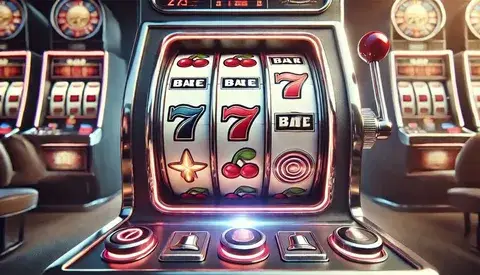Four of a kind in poker opens the door to a special category of combinations where the probability is minimal, but the value is maximum. This structure immediately establishes the player’s status in the hand and often forces opponents to overestimate their own chances. When played skillfully, such a hand brings significant winnings and almost always creates psychological pressure on opponents at the table.
What is Four of a Kind in Poker
In the standard hierarchy of combinations, Four of a Kind in poker ranks second after a straight flush and a royal flush. Four cards of the same rank and one additional card – this is the structure known internationally as poker four of a kind.
For example: four queens plus any fifth card form a complete Four of a Kind. This hand beats a full house, a set, or a pair and instantly shifts the balance of the game.
Four of a Kind Combination and Its Ranking
Four of a Kind always dominates over most combinations. The exceptions are straight flush and royal flush, which appear even less frequently.
For comparison: the probability of hitting such a hand on the flop in Texas Hold’em is around 0.024%, while the probability of a royal flush is less than 0.00015%. This statistics show that Four of a Kind is a rare hand capable of significantly changing the pot even with moderate bets.
How to Get Four of a Kind in Poker
It is possible to form this combination through various scenarios. In Hold’em, a player often sees a situation where three identical cards are on the flop, and the fourth one comes on the turn or river. In Omaha, the task is more complicated because each player is dealt four cards, but only two can be used.
Example: a pair of pocket tens plus two additional tens on the board make a Four of a Kind. Despite the low probability, such moments bring emotional intensity to the game and push players towards all-in.
What Beats Four of a Kind in Poker
Four of a Kind in poker loses only to two hands: straight flush and royal flush. Even a full house, often seeming powerful, is inferior to four identical cards. In practical play, it is rare for this hand to lose its value. However, a strong kicker in the opponent’s hand with equal four cards can be a decisive factor.
Probability of Four of a Kind in Poker
Statistics vividly demonstrate the uniqueness of this combination. In Hold’em, the probability of hitting Four of a Kind with a pocket pair is approximately 1 in 1221, or 0.082%. In Omaha, the probability is slightly higher due to the larger number of cards dealt, but the combination remains rare there as well.
For comparison: the probability of getting a simple pair on the flop exceeds 40%. This ratio emphasizes the strategic value and explains the high interest of players in each such hand.
Playing Four of a Kind: Strategy and Mistakes
Players often make mistakes: they start aggressively raising bets too early or, conversely, play too cautiously, which discourages opponents. An effective strategy requires flexibility. If the table shows activity, it is advisable to gradually build the pot without revealing the strength of the hand. Otherwise, it is important to create an illusion of weakness to lure opponents into the pot.
Practical Tips for Playing Four of a Kind in Poker
Playing Four of a Kind in poker requires precise decisions at each stage of the hand. Even a rare combination loses its value without thoughtful management of bets and table dynamics. Tips:
- Assessing the table and the flop. This card combination is successful when the board does not appear threatening to opponents. If the flop contains a potential straight or flush, opponents may halt their activity.
- Controlling bets. Aggressive raises in the early stages often kill the action. It is more rational to allow opponents to invest in the pot.
- Using the kicker. In situations with four community cards, the kicker determines the outcome. For example: four jacks on the board, one player has an ace, the other has a nine. The victory goes to the hand with the ace.
- Emotional balance. Mistakes often occur due to overconfidence. While this hand guarantees strength, it does not eliminate the risk of losing to a straight flush.
- Maximizing the pot. The best scenario is a gradual increase in bets. This approach leads to a large win without premature pressure.
Implementing these steps skillfully allows for steadily increasing the pot and maintaining the initiative in the hand. Four of a Kind in poker brings maximum benefit only with the right combination of mathematics, observation, and composure.
Comparison with Other Combinations
Four of a Kind in poker confidently dominates over most popular combinations. For example: a set is built on three identical cards, a pair consists of two, a full house combines a three-of-a-kind and a pair. All of them are surpassed by four identical cards, explaining the value of this rare hand. A player holding Four of a Kind immediately controls the hand, forcing opponents to change their strategy.
Four of a Kind vs. Set and Pair
A set often appears strong compared to regular combinations but loses relevance when facing four identical cards. The same applies to a pair, which becomes insignificant in such a situation.
Four of a Kind vs. Full House
A full house can provide confidence but cannot compare to Four of a Kind. For instance, three kings and a pair of tens lose to four kings even with any kicker.
Impact of Format: Hold’em and Omaha
Four of a Kind in poker manifests differently depending on the game variant. In Texas Hold’em, this combination is often built through a pocket pair and board coincidences. In Omaha, the probability is slightly higher due to four cards in hand, but strategies are more complex: only two cards from the hand can be used, requiring precise calculations for this hand.
Psychology and the Table
Four of a Kind in poker always creates tension at the table. Players feel the pressure from such a strong hand, even without seeing the cards. This factor often leads to mistakes: opponents try to guess the hand and either overestimate their own cards or fold strong hands. In this context, psychology plays a crucial role. Rational management of bets leads to winnings and minimizes the risk of losing.
Strategy Against Strong Opponents
Playing Four of a Kind in poker requires a flexible approach against experienced opponents. High-level players can read bet patterns, so straightforward aggression rarely pays off. The optimal strategy involves variability: sometimes it is advantageous to play the hand slowly, while other times speeding up through raises on the turn is beneficial. The main goal is to build a large pot and avoid suspicion until the showdown.
Role of the Kicker in Contested Situations
Situations with equal four-card hands are not uncommon in tournaments. In such cases, the kicker determines the outcome. For example: if there are four queens on the board, one player shows an ace, the other shows a jack. The hand with the ace wins. These details shape the dynamics and define the level of strategic understanding.
Mistakes in Playing
Even strong hands in poker require a skillful approach and careful play. Incorrect actions at the table can easily lead to chip loss, even if the hand looks impressive.
Players most commonly make the following mistakes:
- Going all-in prematurely and forcing opponents to fold their hands;
- Overestimating the value of the hand without considering the possibility of a straight flush;
- Forgetting about the probability of the opponent’s hand strength on later streets.
Such miscalculations often result in a strong hand not yielding the expected win. Avoiding these mistakes makes the game more profitable and allows for confident control of the situation at the table.
Comparison with Other Games
Four of a Kind in poker has no equivalent in strength in blackjack. The blackjack system is based on point counting, not card combinations. This comparison highlights the uniqueness of poker as a discipline where mathematics meets psychology.
Conclusion
Four of a Kind in poker is a combination that strikes a rare balance of strength and rarity. Its appearance determines the dynamics of the hand, causes opponents to make mistakes, and brings significant winnings. The right strategy can turn this hand into a tool of pressure, while mistakes often lead to the loss of potential advantage.
 en
en  ru
ru  de
de  ar
ar  es
es  nl
nl  hi
hi  fr
fr  it
it  pt
pt  el
el 



